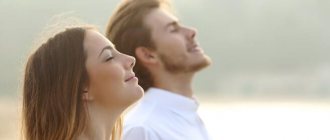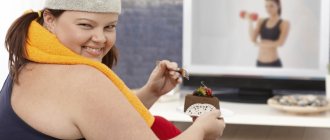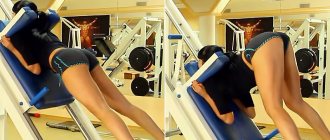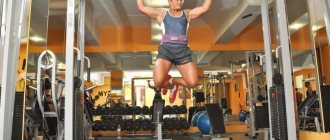What is the essence of the Oxycise method?
The method contains only static exercises without additional equipment, and attention is more focused on special breathing during the exercise. While holding the pose, a breathing pattern is performed that provides excess oxygen to the body, which stimulates the burning of fat cells and also speeds up the metabolism.
The author of the oxysize technique is Jill Johnson.
First lessons - correct breathing
You can often hear questions from people interested in this program: “What is Oxysize gymnastics?” Feedback on the effectiveness of the course? It is worth considering this issue in a little more detail.
To start practicing, you need to master proper breathing. If you perform exercises without taking into account breathing exercises, the result will not be achieved. To master the necessary skills, a little training at home is enough. So, first you need to figure out what breathing according to the Oxysize system is?
There are two types of breathing: diaphragmatic and chest. For good health, disease prevention and normal functioning of the whole body, it is necessary to breathe with the stomach, that is, use the diaphragmatic type of breathing. In this case, the lungs are filled with air in full, and the body is completely saturated with oxygen.
Most people use only chest breathing. In this case, air penetrates only into the upper parts of the lungs, therefore, the body is insufficiently enriched with oxygen. This is why some people develop various diseases caused by regular oxygen deprivation.
Bodyflex or oxysize - what is more effective and what is the difference?
Now let’s compare the oxysize and bodyflex breathing techniques. If in oxysize there is a continuous supply of oxygen, which is a well-known powerful fat burner, and without its presence oxidative processes - fat burning - do not occur, then bodyflex involves holding your breath for a short time, after which oxygen is supposedly absorbed many times more.
In bodyflex, you take a deep breath through your nose, exhale noisily through your mouth, tensing your abdominal muscles, and hold your breath for about 12 seconds. This technique has not been proven to be beneficial and has not brought many the expected results; moreover, holding your breath can be very dangerous.
Oxysize has fewer contraindications. It is continuous breathing that makes oxysize at least safe, so it can be argued that it is more effective.
Contraindications
An additional advantage of the Oxysize complex is that it has virtually no contraindications. Even if you have certain chronic diseases that do not allow you to work out in the gym, you can lose weight with breathing.
Be sure to read: Is it possible to lose weight through active sex?
Some restrictions are imposed only on people with severe tachycardia and hypertension. If you currently have high blood pressure, you should wait until your condition improves and only then begin the training process. Migraines with and without aura are also a relative contraindication.
During the acute period of any illness, it is better to temporarily stop playing sports. Such training will not give pleasant emotions.
For diseases and consequences of injuries to the musculoskeletal system, it is worth reviewing the main groups of exercises and choosing those that will be comfortable for you. There are no restrictions on breathing practices in this case.
Oxysize is allowed during pregnancy, but only when the expectant mother feels well. If you are suffering from toxicosis, swelling, or there is a threat of miscarriage, you should temporarily stop training.
Benefits and harms of oxysize
The advantages and disadvantages of the technique include:
- Strengthening muscles without putting stress on the spine.
- The exercises are performed without holding your breath, which is a safe method of training.
- Static breathing exercises strengthen the deep layers of muscles, improving coordination, mobility, and massaging the internal organs.
- General well-being improves.
- The complex can be performed at any age.
The disadvantages include a number of contraindications - a natural phenomenon for physical activity. Therefore, before starting classes, you should consult your doctor.
Another disadvantage is the low effectiveness of training , which slowly leads to positive results, although the author of the method claims effective and rapid weight loss.
How to do an oxysize workout for beginners
In order for the technique to be beneficial, the author of the program gives the following recommendations:
- Train on an empty stomach or 2-3 hours after eating.
- Eat your meal an hour after your workout.
- Train for half an hour 5-7 times a week.
- Perform the exercise for at least 30 breathing cycles.
Oxysize exercise set
It is recommended to perform the exercises for at least 30 breathing cycles, but for beginners this number can be reduced in the first week of training.
Exercise No. 1
Technique for strengthening the gluteal muscles. Place your feet pelvis-width apart, tip your pelvis over, bend your knees, twist your tailbone down, making your lower back flat. While maintaining tension in the buttocks, perform the oxysize breathing technique (1 cycle: long inhalation - 3 short inhalations, long exhalation - 3 inhalations). Do this for at least 30 breathing cycles, then recover for a few seconds.
Exercise No. 2
Standing with your feet hip-width apart, tuck your tailbone – your lower back is flat. Raise your right arm up and make a slight tilt in the thoracic region to the left. Breathe using the oxysize technique. Then change the side of the inclination and breathe the same number of cycles.
Exercise #3
Feet hip-width apart, bend your knees and place your palms on your hips, keeping your elbows straight. Pull your pelvis back and keep your back straight. Do a breathing exercise.
Exercise #4
For the exercise you will need support: the back of a chair and a table. Hold onto the support with your hands, but do not carry your body weight. Place your feet wide with your toes pointed apart. Tip your pelvis over, tucking your tailbone under you. Squat down in a plie and hold the position. Do a breathing exercise.
Exercise #5
Also hold onto the support with your feet together. Take your right leg back and lift it off the floor, tensing your gluteal muscle. Bend your supporting leg slightly. Do not lean your body forward. Keeping your right leg suspended, perform oxysize breathing exercises. Repeat the same number of breathing cycles on your left leg.
Exercise #6
Holding onto a support, place your feet together. Bend your right leg at the knee and lift it to the side, without tilting your body too much to the side. Keep your hip suspended by squeezing your gluteal muscles and hip abductor muscles, and breathe using the same technique. Then switch legs.
Exercise No. 7
A more complicated version of the previous exercise. Holding onto the support, lift your right leg to the side above the floor, bending at the knee. Then push your hip back without fully straightening your knee, thereby maintaining tension in your glutes. Perform the breathing technique, then switch legs.
Exercise #8
Hold the back of a chair or table with your hands, move your feet back as far as possible, forming an even line of your arms and torso - from your fingers to your tailbone. Arch your lower back slightly, increasing lordosis. Feet hip-width apart, knees straight, feel the maximum extension of the back of the thigh. Perform the breathing technique for several cycles, then walk your feet forward and straighten up.
Exercise #9
Sit on a chair, place your feet together, place your left palm on the chair behind your back and twist your body in the same direction, throwing your right arm over your head, stretching out diagonally. When twisting to the left, perform the breathing technique. Then repeat on the other side.
Exercise No. 10
Sitting on a chair, place both palms back on the seat, leaning your body back slightly, raise your legs above the floor, bending your knees slightly. When bending back, keep your back straight. While holding your legs, tighten your abdominal muscles and perform breathing techniques.
Exercise No. 11
Get on both knees on a soft mat, tip your pelvis over (twist your tailbone), hold your hands in front of you, you can make a finger lock with your palms facing outward. Lean your torso back, keeping your torso and hips in a straight line from your knees to the top of your head. Keep tension in your buttocks and abdominal muscles and perform the breathing exercise for several cycles. When finished, sit back on your heels and relax.
Exercise No. 12
Sit in a “butterfly” position: on your buttocks, with your feet together, with your sharp knees spread out to the sides as close to the floor as possible. Lean your body forward slightly and press your elbows into your inner thighs. Hold the position and breathe using the same technique. Finally, relax.
Exercise No. 13
Lie on your side with your lower arm resting on the floor. Keep your other hand on your belt. Raise your upper leg as high as possible, without tilting your pelvis and back, keeping your whole body in the same plane. Don't raise your shoulders, stretch your neck up. Keeping your leg suspended, breathe several cycles. Switch sides and lift the other leg.
Exercise #14
From the starting position of the previous exercise - lying on your side, twist your body, placing your elbows on the floor, but do not touch the floor with your stomach and iliac bones. Raise your upper leg up, straightening the knee, and pull the toe towards you. Hold this position and breathe as usual. Then turn over to the other side and do the same on the other side.
Exercise No. 15
Lie on your back, place your palms behind your head. Place your feet on the floor shoulder-width apart with your knees bent. Lift your shoulder blades off the floor, maintaining tension in your abdominal muscles, but do not lift your lower back or touch your chin to your collarbones—look at the ceiling. While maintaining tension, breathe as usual. Then lower your shoulder blades and relax.
Exercise No. 16
Stand in a plank position with your palms under your shoulders and your feet hip-width apart. Tighten your abdominal muscles while keeping your spine straight. Breathe according to a standard, unchanged pattern. After performing, place your feet on the floor and relax.
Exercise No. 17
Stand with your back to the wall, lean your elbows completely on the wall, place your feet forward together so that when you lower your pelvis down (slide along the wall), your legs and body form a “chair” pose - knees at right angles, pelvis at knee level. While holding the position, breathe as usual. Then straighten up and push off from the wall.











